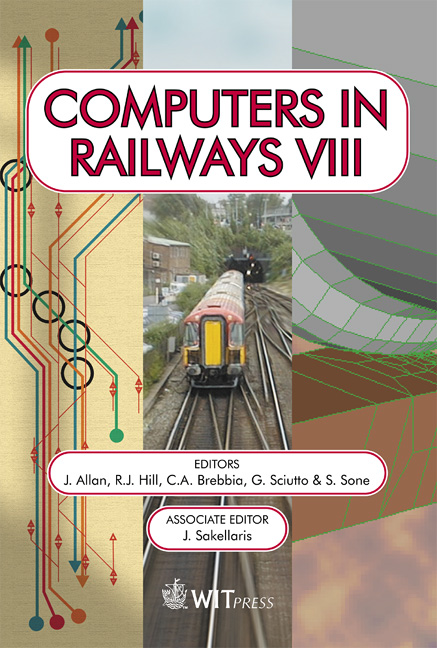Testing The Stability Of The Rail Network
Price
Free (open access)
Transaction
Volume
61
Pages
8
Published
2002
Size
623 kb
Paper DOI
10.2495/CR020981
Copyright
WIT Press
Author(s)
D Middelkoop & M Bouwman
Abstract
The Dutch rail network system is one of the busiest networks in the world. Small delays can have large implications elsewhere. Railned, the Dutch capacity manager for rail infrastructure, uses timetables for the specification, development and allocation of the capacity of rail infrastructure. For a number of scenarios different timetables or timetable-structures are compared on a set of criteria. One of those criteria is the stability of the network. To measure the stability and the sensitivity for disturbances, Railned has developed the network simulation tool SIMONE, in co-operation with Incontrol. The tool is used in a number of studies. This article describes some case studies to demonstrate the kind of problems that are investigated. The cases are used to determine the use of SIMONE in the Railned Capacity Allocation department. The first case investigates the influence of a local correspondence in Weesp. The waiting time for a departing train in this station was varied, both positive and negative effects could be demonstrated. The second case shows the effects of introducing extra freight trains using the triangle Den Bosch-Tilburg-Eindhoven. Most trains routed from the harbour of Rotterdam to Germany pass this triangle. The results show expected and unexpected bottlenecks in the network. The third case evaluates the introduction of a switch in the station Hengelo. With this new switch a change of the timetable is possible to solve a bottleneck in a neighbour station. With SIMONE it could be demonstrated where in the network benefits and disadvantages occurred. The results were reason to investigate future extensions and development of SIMONE.
Keywords





